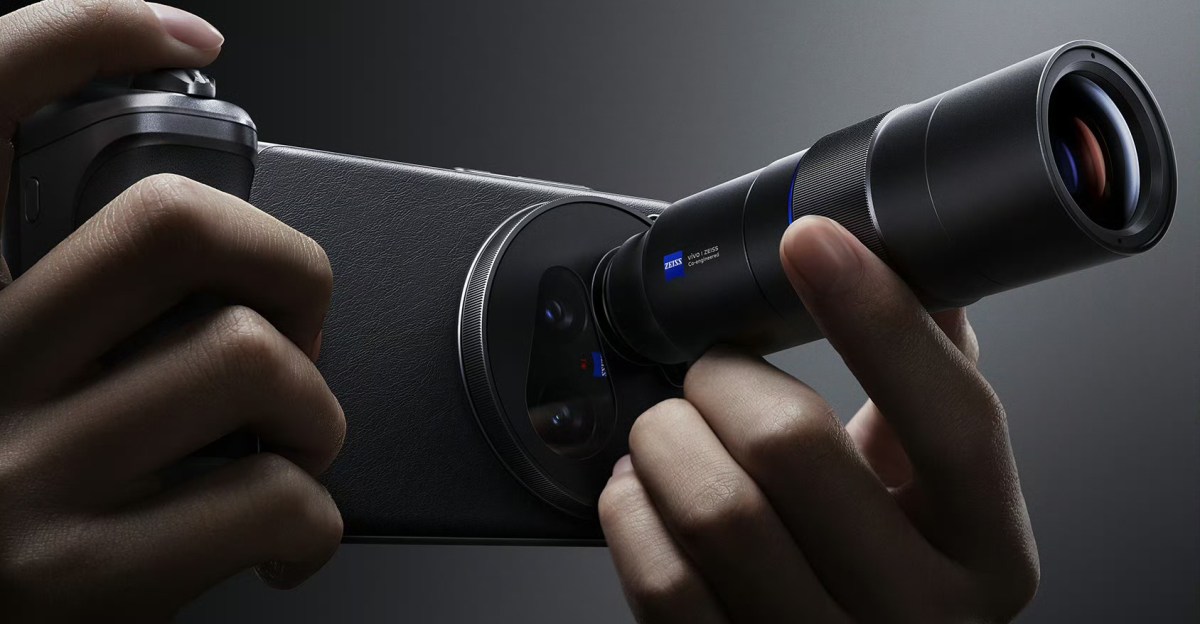Following several weeks of teases, Vivo has announced all the details of its new X200 Ultra smartphone which is launching in China. The X200 Ultra runs Qualcomm’s newest high-end Snapdragon 8 Elite processor with up to 16GB of RAM, and up to 1TB of storage. But what really sets it apart is its back triple camera array, which can be upgraded with accessories designed to not only expand the phone’s zoom capabilities to be comparable to a standalone camera, but also improve its ergonomics when taking photos or recording video.
The Vivo X200 Ultra starts at 6,499 yuan (around $890) for a version with 12GB of RAM and 256GB of storage and maxes out at 7,999 yuan (around $1,096) with 16GB and 1TB. It includes a 6.82-inch OLED screen, an under display fingerprint sensor, 90W charging speeds with a USB-C cable, up to 40W wireless charging with a compatible charger, dust and water resistance, and silver, red, and black color options. (There are currently no plans for release outside China.) It hasn’t released specifics on battery life — often an issue with smartphones that are supposed to double as other gadgets — beyond saying users can “rely on their device throughout the day.”
For 2,598 yuan (around $356) or in a 9,699 yuan (around $1,329) bundle with the 16GB/1TB version, you can add the Photographer Kit, which is where the phone gets interesting.
Even without any of the kit’s accessories, the X200 Ultra’s photography capabilities could give you enough reason to leave your dedicated shooter at home. On the back of the phone you’ll find a pair of cameras with 50-megapixel 1/1.28-inch Sony sensors and optical image stabilization. One is paired with a 14-millimeter f/2.0 wide-angle lens, while the other has a 35-millimeter f/1.69 lens useful for portrait photography and capturing a shallow depth-of-field. A third camera uses a 200-megapixel 1/1.4-inch Samsung HP9 sensor and an 85-millimeter f/2.27 telephoto zoom lens with macro capabilities and image stabilization. On the front of the phone you’ll also find a 50-megapixel selfie camera.
All three rear cameras can capture 10-bit 4K video at 60 fps with slow-motion capabilities that max out at 4K/120 fps. Vivo says image and video quality is enhanced through the use of two “newly developed” dedicated chips: the VS1 that pre-processes RAW data straight off the cameras’ sensors, and the V3+ that handles post-processing tasks such as filters and color correction. Similar to the Camera Control feature on the iPhone 16 lineup, the X200 Ultra also features an enhanced shutter button that can be used to adjust exposure or zoom by sliding your finger across it.
The optional Photographer Kit further expands the X200 Ultra’s photography and video capabilities. The kit adds a grip featuring a dedicated video record button, a settings dial with customizable functionality, a zoom control, and an additional 2,300mAh battery extending the life of the phone’s 6,000mAh battery. Vivo hasn’t revealed how much weight all of the kit’s components will add to the 232-gram smartphone, but the improved ergonomics, and the inclusion of a shoulder strap, could make it easier to handle when fully accessorized.
The kit also includes a Zeiss 2.35x telephoto converter lens that attaches to the phone using adapters to boost the zoom capabilities of the X200 Ultra’s 200-megapixel camera from 3.7x to up to 8.7x.
Will Vivo’s X200 Ultra completely replace the need for a dedicated camera? With sensors that are much smaller than what you’ll find in modern DLSR or mirrorless cameras, professional and even amateur photographers will still want to hold onto their cameras that offer better low-light performance. The option to boost the phone’s zoom capabilities by adding a telephoto lens is useful, but Vivo needs to introduce a larger collection of add-on lenses that gives photographers more creative choices if it wants the X200 Ultra to truly be considered a viable camera replacement. Even so, it’s more camera than you’ll get with just about any other smartphone on the market.
Read the full article here














